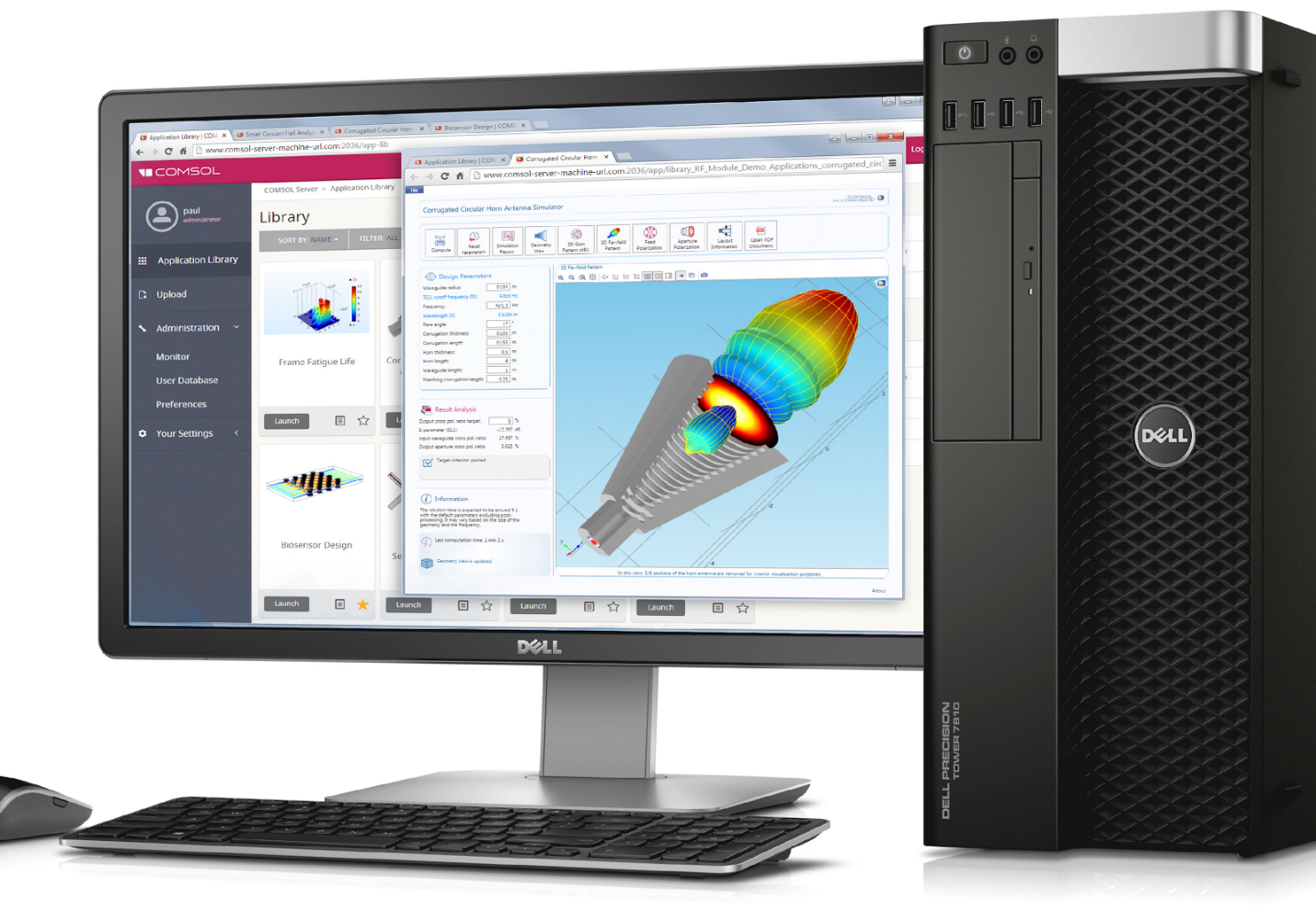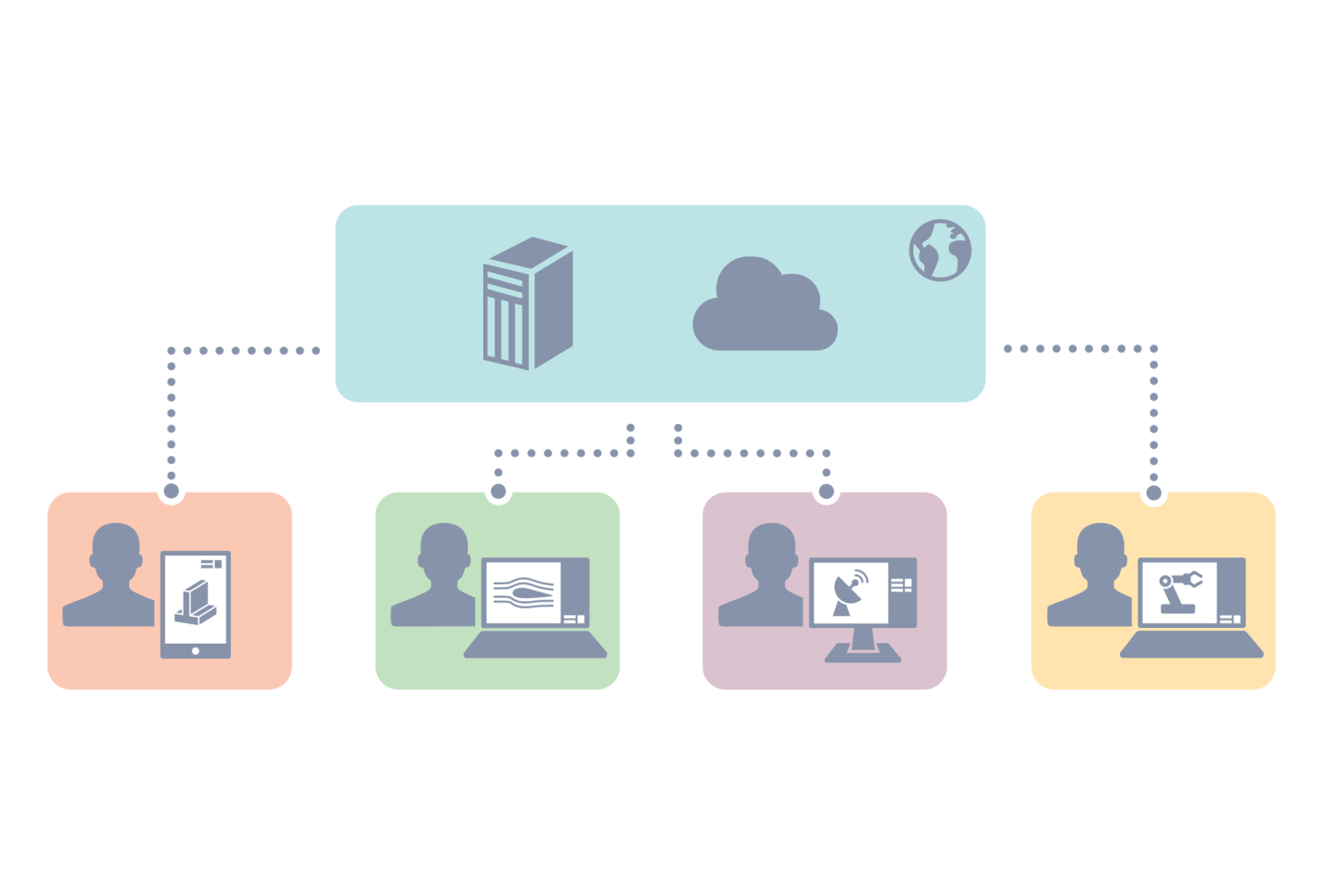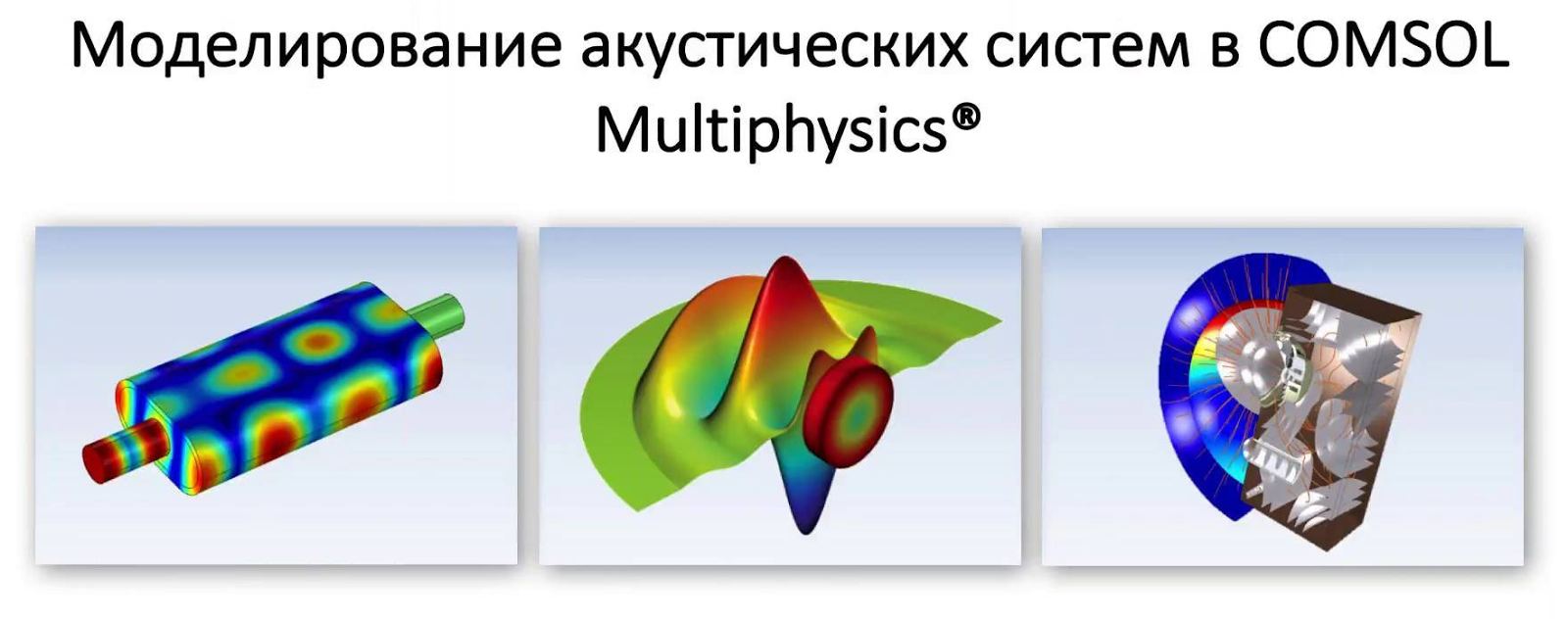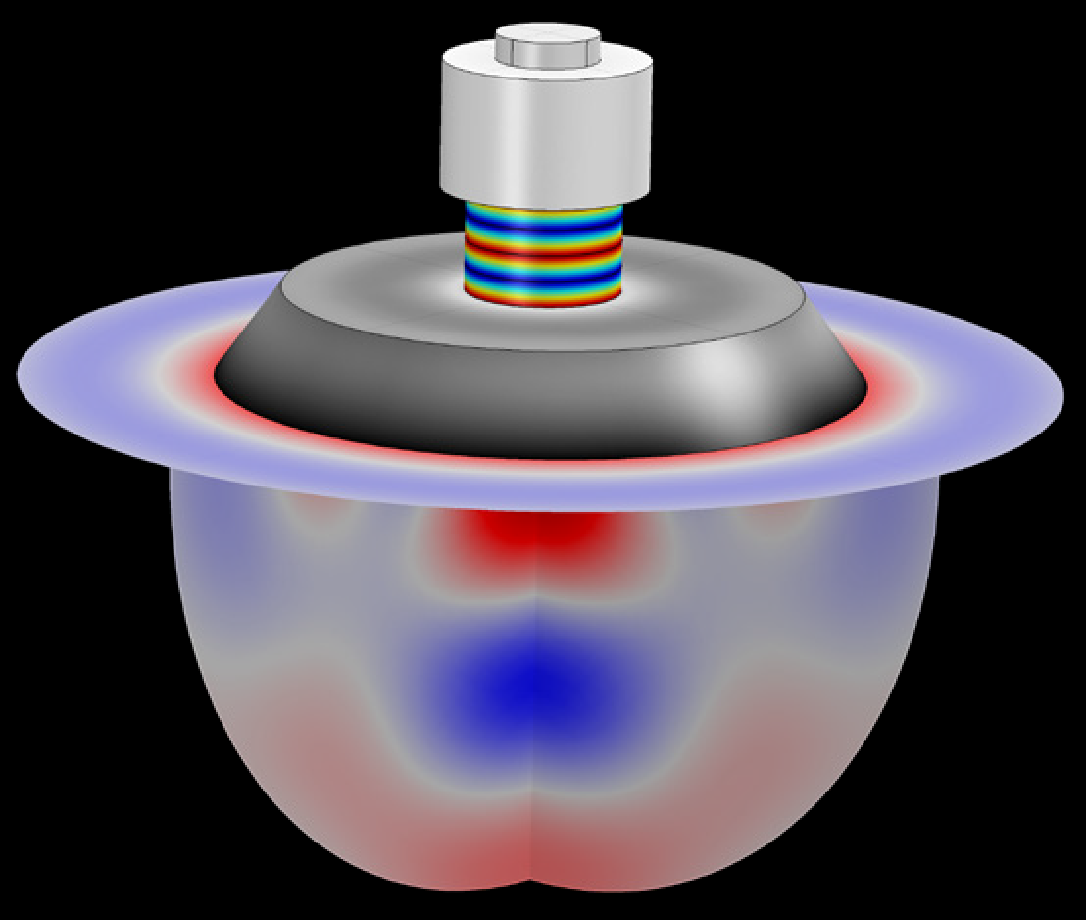Modern software and hardware has made a real revolution in the work of design engineers and designers. Designing with the use of modeling brings with it many advantages, including:
- Save time and money with fewer physical tests;
- The ability to quickly identify the best solutions at the start;
- Freedom of what-if experiments, especially when creating products for new markets.

Further implementation of the simulation will give design engineers even more benefits. But technological and personnel problems, the habit of acting "on the thumb" do not allow companies to fully unleash the potential of the methodology. What can make a difference?
1. Advances in hardware and softwareComputational power is becoming more accessible, and the simulation software is optimized to fully utilize it. Thanks to this, designers can take full advantage of the modeling.
It is interesting, for example, to compare the COMSOL Multiphysics software on the Dell Precision workstation three years ago with their current counterparts (details below). As it turned out, modern hardware and software conducts experiments with models up to six times faster!

COMSOL Multiphysics software is optimized to support the latest hardware. The hybrid modeling feature and the Floating Network license allow you to render large projects on standard workstations that support parallel data processing or on multi-core multi-node clusters.
Software package for multiphysical modeling
COMSOL software package is designed to simulate any physical systems. COMSOL Multiphysics includes the COMSOL Desktop graphical user interface (GUI) and a set of pre-configured user interfaces and tools that are designed for standard simulation tasks. Additional modules extend the platform's capabilities by providing modeling in specific areas and integration with third-party software packages. The modules complement the basic physical interfaces of the COMSOL Multiphysics package, which allows you to simulate complex electrical, mechanical, hydrodynamic and chemical phenomena. To solve complex multiphysical problems, you can combine any number of modules. The COMSOL Multiphysics package also includes an application development environment with which you can create user-friendly user interfaces that make mathematical modeling accessible to all interested employees of the organization.
|
2. Availability of specialized software not only for expertsTo avoid bottlenecks when working with modeling, it requires not only the latest hardware and software. To create models, carry out calculations and analyze results, extensive knowledge is needed, which most companies lack. Even with the fastest computers and the latest software, enterprises can not work without the help of experts.
One of the solutions to the problem is to disseminate the necessary skills among a wide range of specialists with the help of applications that are relatively easy to learn. For example, the COMSOL Application Builder and COMSOL Server technologies allow you to model the entire design team in COMSOL Multiphysics.

Even employees who are not well versed in the industry can solve complex tasks without the help of experts — setting up variables, starting modeling processes, and getting the answers you need.

Applications can be downloaded to COMSOL Server - a program that allows you to run them from anywhere in any browser or specialized desktop client.
Thus, Application Builder and COMSOL Server democratize modeling. Organizations use these applications to optimize research and development, expand the capabilities of their engineers, and get rid of routine tasks, focusing on high-level solutions.
3. Dissemination of a “modeling culture”Against the background of increasing complexity of products and reducing the time they enter the market, engineers and entrepreneurs are ready to change the workflow for the sake of their main goal - innovation. Nevertheless, the introduction of modeling-based design is a great event that requires the joint efforts of management and ordinary employees. Managers must understand the benefits of modeling and correctly assess the return on investment in this technology.
The massive introduction of modeling will allow companies to develop better and better products, reduce their time to market and, accordingly, outpace competitors. Now, most engineering organizations no longer have any idea how to create products at a level higher than the base one without modeling. But until recently, the complexity of the technology limited its use and did not allow to reveal the full potential of its potential.

Software for modeling with its mathematical equations, a complicated installation procedure and a complex user interface remained for a long time "on the sidelines" of engineering. It was intended for a small group of trained researchers and developers who understood well how to configure certain parameters. The software also had limited functionality, so it was poorly adapted for solving multi-faceted tasks when creating complex innovative products.
Hardware limitations
The scope of modeling was further narrowed when it came to technical requirements for finite element analysis (FEA) and computational fluid dynamics (CFD). The old workstations did not have enough power to adequately manage complex models and intensive computational processes.

So, the lack of qualified specialists and the insufficient capacity of workstations for a long time prevented organizations from using the full potential of modeling. But today the obstacles are removed. The technique can be used by almost all designers - especially in the early stages, when it most strongly affects the result. Attracting the whole team to the modeling at all stages of the work allows you to get the most out of it.

Extensive use of modeling (especially for design and development) stimulates an iterative approach to work and allows organizations to consider more alternatives. In addition, dependence on expensive physical prototypes is reduced and it becomes possible to quickly determine optimal projects.
Computer simulations or physical tests?
Computer simulation of various physical processes significantly speeds up the process of product development, allows significant savings on the assembly of test models. With the help of modern computing power and software, engineers can simulate the work of individual components and nodes of complex systems, and as a result, reduce the number of physical tests required before launching a new product. Industry faces challenges such as time to develop a new product and development cost. And in the automotive industry and aerospace industry without modeling is almost impossible to do. It helps significantly speed development and reduce costs.
The emergence of modern computing systems that are able to simulate the dynamic properties of objects under various influences, overshadowed the modernization of stands for physical testing, as well as the development of test methods. Many organizations try to choose modeling, as it minimizes development costs and time. However, in some studies, only the process of conducting physical testing of a product can provide an accurate answer.
|
Evolution: hard and soft
Manufacturers and experts have put a lot of effort into making the advantages of modeling when creating projects available to a wide range of specialists. However, now organizations are only beginning to benefit from the massive implementation of the methodology. This is facilitated by the achievements in many technological areas and their wide application in practice. Powerful processors, high-performance solid-state drives (SSD) and large memory capacity allow modern workstations to successfully solve problems with large models. Here, at a new level, parallel data processing capabilities are applied.
Reduced prices for workstations made them available to a wide range of users. Now companies can significantly increase their computing power with the same investment.
Solving modeling problems that are too complex for an average workstation allows advances in high-performance computing (HPC). Today, cluster technology is available to companies. The leading simulation software is certified to work on HPC clusters, and a new generation of software facilitates the management of this equipment.
Simulation software has also changed significantly in recent years. New, intuitive user interfaces smooth out the complexity of the technology, and the applications themselves are much more powerful and at the same time easier to set up.

Modeling software providers are actively working on certification. They optimize programs to use all the functions of a modern workstation: multi-core, an updated set of instructions, faster SSDs. Parallel data processing and multi-threading work allow you to solve complex problems much faster and more accurately.
Time Machine: from 2012 to 2015
Against the background of such radical changes, we examined the results of the increase in hardware performance and software update to the latest version. For example, we compared the current configuration of the Dell workstation and the newest version of COMSOL Multiphysics with the same products three years ago.
An average company every three years evaluates its capacity to upgrade hardware and software. To do this, its management analyzes the formal return on investment (ROI).
Let's compare the latest version of COMSOL Multiphysics software on a modern workstation with hardware and software that was standard three years ago. In particular, let us consider how long it takes to create various models on the Dell Precision T3500 workstation and the current generation of the workstation - Dell Precision Tower 7810.
Dell Precision T3500 is equipped with one Intel Xeon W3505 processor with a clock frequency of 2.53 GHz, two cores, 12 GB of RAM and a 300 GB hard disk. It works under Windows 7 Pro and uses COMSOL Multiphysics 4.2.0.288.
Modern working station Dell Precision Tower 7810 is equipped with two Intel Xeon E5-2687W v3 processors, which operate at 3.1 GHz and employ 20 cores. The system is equipped with 64 GB of RAM, a 500 GB SCSI disk and a Samsung SS85 SSGB solid state drive with a capacity of 512 GB. The MPI interface provides support for cluster-type hybrid parallel processing. The software is still Windows 7 Pro (so our comparison will be objective), but the latest version of COMSOL is 5.0.1.276.
We selected models of various types to see how all the advantages of COMSOL manifest on the new hardware.
- 3D Fluid-Structure Interaction (three-dimensional model of liquid-structured interaction), where laminar flow and structural mechanics are involved.
- Tonpilz Piezo-Transducer (Tonpilz piezo transducer model) requiring a parametric study.
- Aluminum Extrusion (aluminum extrusion model), which combines structural mechanics, laminar flow and heat transfer.
- Electrical Switch (electrical switch model) that uses structural mechanics, electrical current and heat transfer.
The key to effective modeling management is the new hardware with the latest version software. For our test were used:
Hardware platform
| Dell Precision T3500 Workstation (released 3 years ago)
| Modern Dell Precision Tower 7810 Workstation
|
CPU
| Intel Xeon CPU W3505, 2.53 GHz
| Two Intel Xeon E5-2687W v3 processors, each 3.1 GHz
|
Number of cores
| 2
| 20
|
Ram
| 3x4 GB
| 4x16 GB
|
Storage
| 300 GB SATA HDD
| 500GB SCSI HDD, Samsung SM841N Solid-State Drive (SSD)
|
Software
| Windows 7 Pro; COMSOL Multiphysics 4.2.0.288
| Windows 7 Pro; COMSOL Multiphysics 5.0.1.276
|
MPI
| -
| Used for hybrid parallel data processing
|
Simulation results
The modeling of physical processes at workstations in three years has progressed significantly — in terms of model size, complexity, and of course, speed of work. The Dell Precision Tower 7810 station, thanks to a much larger number of cores and memory, parallel data processing and hybrid modeling capabilities in the latest version of COMSOL, showed a performance increase of up to six times (depending on the type of model and the field of physics). For example, working with the Aluminum Extrusion model from 4.23 million degrees of freedom three years ago took 920 seconds, and now only 153 seconds: six times less.
The 3D Fluid-Structure Interaction model with 290,000 degrees of freedom on the Dell Precision T7810 and COMSOL 5.0.1.276 was processed in 906 seconds, compared to 4617 seconds on the Dell Precision T3500 and COMSOL 4.2.0.288. This is a fivefold increase in speed. The model of the electric switch is now processed four times faster - in 255 seconds instead of 1028. The Tonpilz piezoelectric transducer model with 56,000 degrees of freedom showed more modest results due to its small size. However, on new hardware using the latest version of COMSOL, the speed has more than doubled: 209 seconds compared to 481 seconds on hardware and software three years ago.
Running old workstations or software versions is commonplace for companies with a limited budget. But in fact, they are losing more by trying to model on obsolete resources that do not correspond to the growing size and complexity of projects.
The advances in hardware over the past three years have helped dramatically increase modeling volumes and processing speed. Modern workstations are equipped with processors with a large number of cores, which allows them to be used for parallel processing - an option that three years ago was available only in clusters.
Modern software for modeling has automatic support for multiple cores and the function of parallel data processing. Previously, a specially trained professional had to manually make changes to configure the software for parallel processing on a particular platform.
 Task:
Task: Aluminum Extrusion
Number of degrees of freedom: 4,235,000
Fields of physics: the interaction of structural mechanics, laminar flow and heat transfer
Decision time
Workstation and software three years ago: 920 seconds
Modern workstation and current software version : 153 sec
Speed increase: 6.01 times
 Task:
Task: 3D Fluid-Structure Interaction
Number of degrees of freedom: 290,000
Fields of physics: close interaction of laminar flow and structural mechanics
Decision time
Workstation and software three years ago: 4617 seconds
Modern workstation and current software version: 906 sec
Speed increase: 5.1 times
 Task:
Task: Multiphysics Electrical Switch
Number of degrees of freedom: 115,000
Fields of physics: close interaction of structural mechanics, electric current and heat transfer
Decision time
Workstation and software three years ago: 1028 seconds
Modern workstation and current software version: 255 sec
Speed increase: 4.03 times
 Task:
Task: Tonpilz Piezo-Transducer
Number of degrees of freedom: 56,000
Fields of physics: a parametric study of the interaction of the acoustic structure with a piezoelectric transducer
Decision time
Workstation and software three years ago: 481 seconds
Modern workstation and current software version: 209 sec
Speed increase: 2.3 times
Dell Precision Tower 7810 Workstation
The current generation of Dell Precision workstations includes a Dell Precision Tower 7810 with two Intel Xeon E5-2600 v3 processors (up to 18 cores each), the latest NVIDIA Quadro and AMD FirePro graphics cards, and up to 256 GB of system memory with innovative DDR4 RDIMM technology . The special chassis design facilitates access to system components and simplifies its updating.
Among the options Dell Tower 7810 - PCIe solid-state drive with active cooling, which works 180% faster than traditional SSD-drive SATA. Available with traditional hard drive options. This configuration has almost no effect on performance: Intel CAS-W software solutions provide I / O speed, comparable to a solid-state drive, at the price of a regular HDD.
Dell Precision stations are certified by independent software vendors, which ensures uninterrupted operation of all popular design applications. Dell Precision Optimizer software improves system performance by automatically setting it up to run any program at maximum speed.

Dell Precision 7810 also offers security solutions: encryption, advanced authentication, and anti-malware protection.
In the following material, we will describe in detail what design tasks companies solve at Dell workstations, how they apply modeling, and what results they achieve with it.